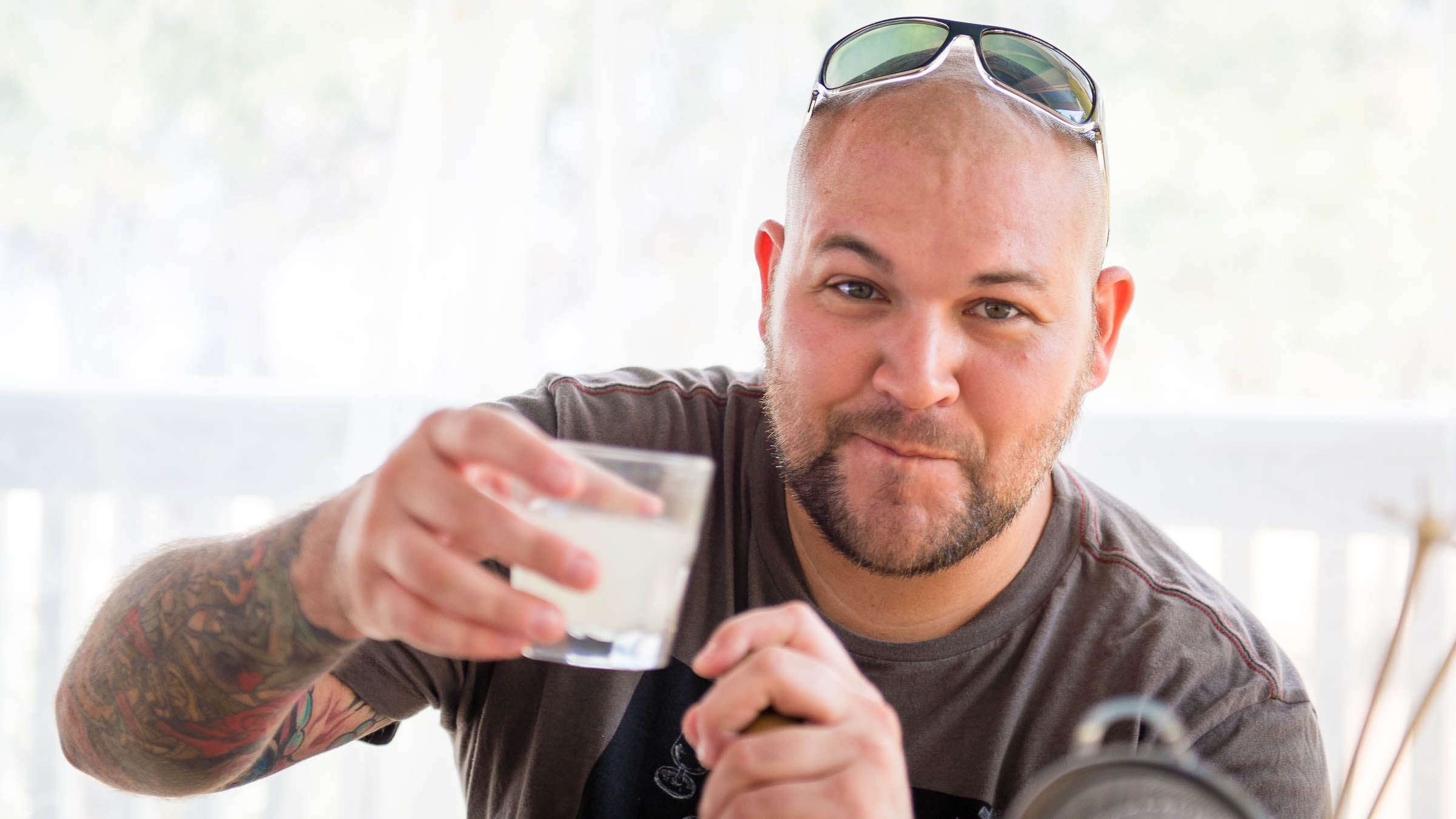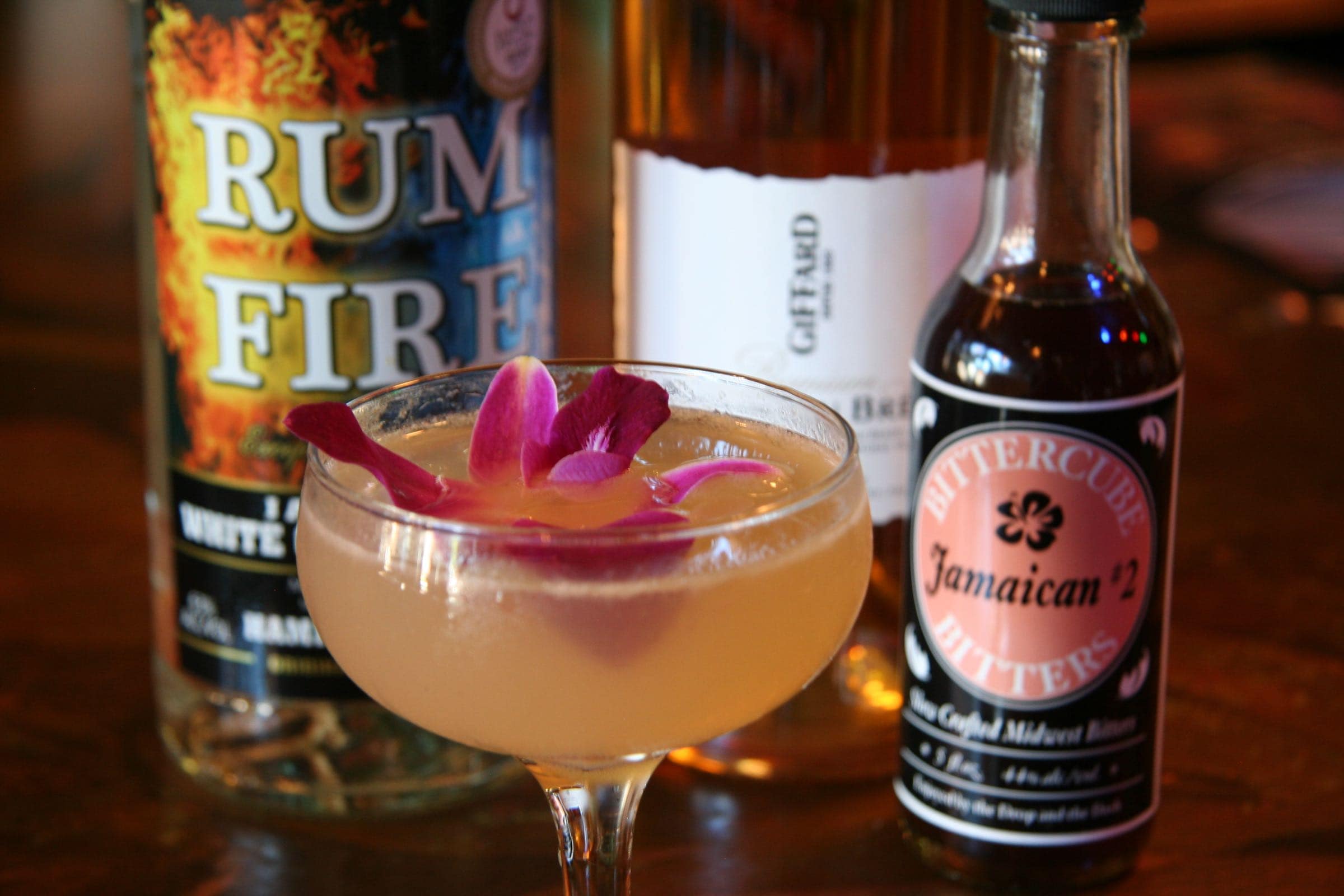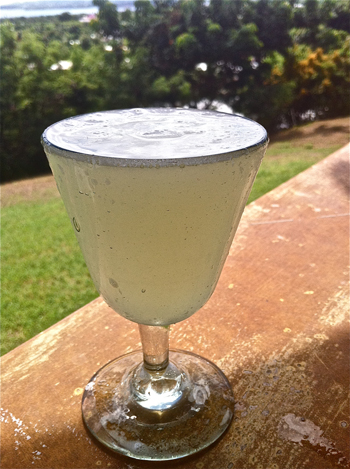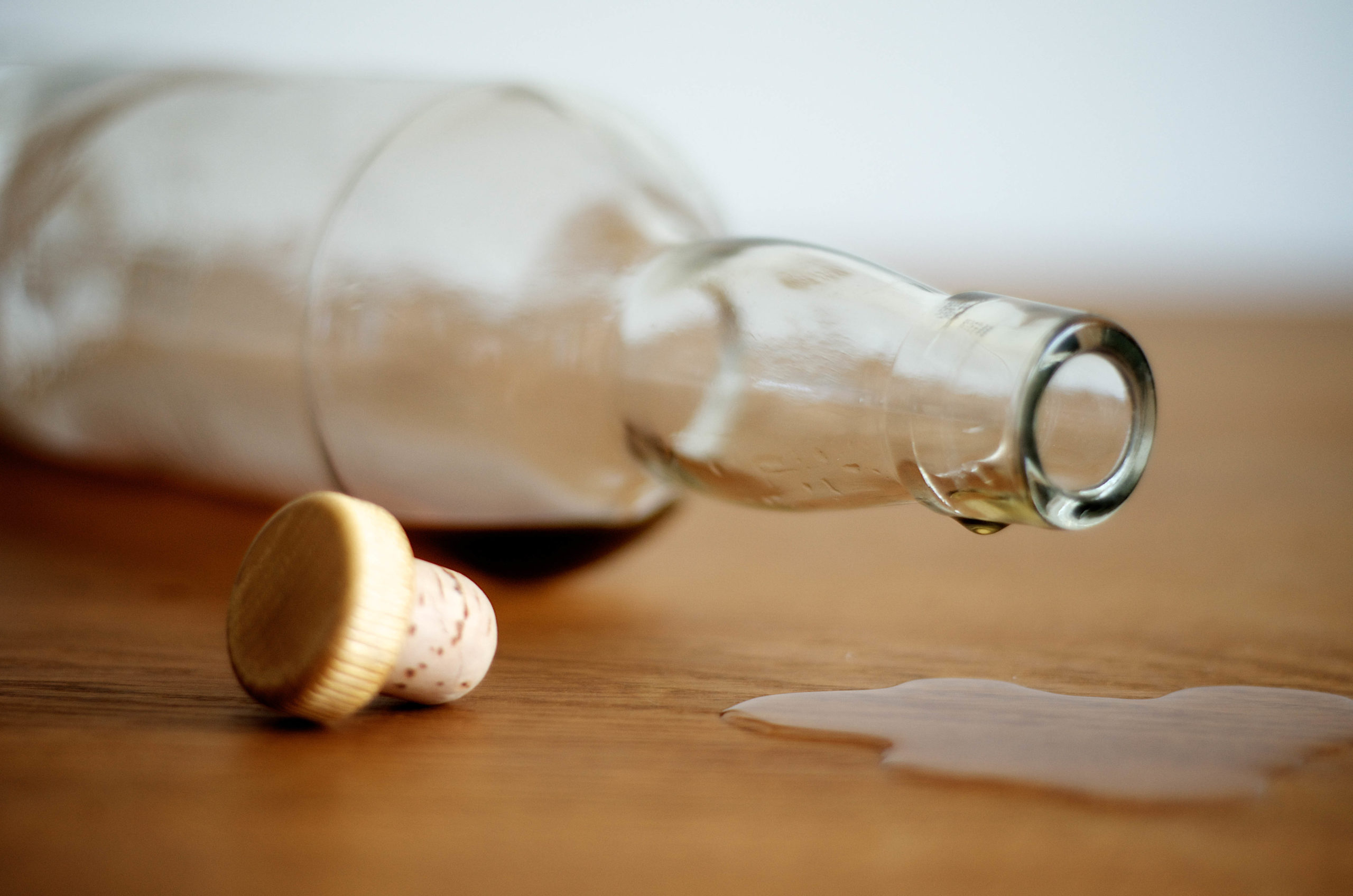The Classic Daiquiri Recipe – You’ve Been Doing it Wrong
Never in the history of cocktails has such a perfect libation suffered more lies and out-and-out abuse than the classic daiquiri.
To understand how we got to where we are with this drink, we’re going to have to go back. I mean way back. It’s a tale over 100 years in the making! Once we get back to the present, we’ll celebrate our new knowledge by following the only recipe you’ll ever need to sample this finest of cocktails.
First, what is a daiquiri?
Originally, a daiquiri was nothing but light rum and a little fresh lime juice poured over sugar.
Now, for followers of this site, that simple set of instructions should sound pretty familiar. That’s because it’s the recipe for a petit punch. Or as it’s more affectionately truncated throughout the French West Indies, a ti’punch—the national drink of Martinique.
A ti’punch is a very particular beast in that you never serve it with ice. It’s meant to connect you firmly to the terroir of the rhum’s home—be it Martinique, Guadeloupe, or some other excellent producer of rhum agricole. Ice would only get in the way of experiencing the pure, hot flavor of these destinations.
This avoidance of ice, however, did not extend to the islands of the Spanish Caribbean. There, ice became mandatory. Evolution added a shaker. And now, generally speaking, sugar crystals have been replaced with simple syrup.
Let’s recap.
What’s in a daiquiri?
Light rum, lime juice, and simple syrup. Put ’em in a cocktail shaker. Shake vigorously. That. Is. It. The end.
This perfect cocktail is light, refreshing, a little tart, a little sweet, balanced, elegant, and magic on a hot day in the islands.
Anything else is something else!
Now that you know what a daiquiri is let’s take that trip back in time.
When considering this perfect cocktail, shenanigans begin at the beginning. Just try to ask someone claiming to be in the know:
Who invented the daiquiri?
Likely, the answer you’ll receive is Jennings Cox. This American was working at an iron mine in the town of Daiquiri Cuba near Santiago de Cuba on the southeast coast around 1905. Legend has it that Cox had his eureka moment when he ran out of gin while entertaining guests.
And just like that, according to the story, this classic Cuban cocktail was born. (About now is when I ask, “Why the hell was this man drinking gin in Cuba?” The whole story is now immediately suspect.)
Other tales grant the honor of invention to German nobility. Still others credit a number of different Cuban bartenders. The real question, though, remains:
If people have been enjoying a cocktail for hundreds of years and you decide to name it ‘Fred,’ does that mean you just invented the Fred cocktail?
The answer, of course, is “no!” (Unless you’re a misguided megalomaniac like Christopher Columbus.)
But unfortunately, that’s been the case with the daiquiri. The truth is, as we’ve already discussed with the ti’punch, rum and lime go together like drinking and dancing, or rice and beans, or callaloo and macaroni pie! If one is around, the other is likely to follow.
Classic Daiquiri History
As a for instance, let’s go even further back to the 1700s. Thanks to the Seven Years’ War (often called the first world war since it involved every significant power in Europe of the time and spanned five continents), the Caribbean was lousy with British Ships constantly sparring with their French counterparts.
Way back then, the British Navy was already doling out rations of rum to their sailors. “Up Spirits” happened every day between 10AM and noon and also between 4 and 6PM. And those sailors needed their spirits lifted because of more than just the war.
They were dying. And dying a lot. Not because of battles, but because of the scourge of scurvy. The disease was killing more British sailors than enemy action!
During the Seven Years War, The British Royal Navy enlisted (conscripted?) 184,899 sailors.
Around 133,708 of those sailors fell to the disease!
Vitamin C Cure
As luck would have it, around the 1740s, doctors back in England discovered something. They could stem the deaths with a straightforward treatment: a little vitamin C.
Quickly the navy adopted the cure. Around 1756 new regulations passed requiring the addition of a little lemon or lime juice to the sailors’ rations.
Considering that these men were in the service of protecting highly productive and extremely valuable sugar plantations, it’s not a leap to think they had access to the sweet fruits of the region’s slave labor back in the mid-1700s.
And while that may be 100 years before the gin-drinking Cox, that’s still at least over 100 years after rum and limes were already an integral part of the West Indian landscape.
So, if you think locals, be they plantation owners, naval captains, traders, slaves, or really anyone else wasn’t mixing rum and lime juice then thinking, “hmm, that could use a little sugar” at least 200 years before 1905, you’re crazy!
The American Introduction
Cox likely gets so much credit as the inventor thanks to how the drink rose to fame in the United States. You see, there’s another famous location in Cuba right down the road from the town of Daiquiri: Guantanamo.
The United States Naval Base at Guantanamo Bay was established back in 1898 at the end of the Spanish-American War. Back in 1909, the USS Minnesota paid the base a routine visit.
Aboard the Connecticut-class pre-dreadnought battleship, were two men who etched their names into history: Captain Charles H. Harlow and junior medical officer, Lucius W. Johnson. After a tour of the old Spanish-American war battlegrounds, they came to Daiquiri with a thirst and who should they run into? You guessed it: Cox.
Naturally, he imparted upon these naval officers his “creation.”
Johnson fell in love. He returned to the Army and Navy Club in Washington DC with casks of rum and the recipe.
Quickly, the daiquiri became standard issue at the club. It even survived Prohibition. There’s even a Daiquiri Lounge that remains at the Club to this day.
This became ground zero for the cocktail’s US invasion. Within a matter of decades, its popularity spread nationwide.
Little junior officer Johnson later went on to climb to the rank of Rear Admiral Lucius W Johnson. Coincidence?
Hemingway’s Daiquiri
While I’ve already said anything other than rum, lime juice, and sugar isn’t a daiquiri, there is one reasonably famous exception to this rule: the Hemingway Daiquiri.
Don’t bother with churches, government buildings or city squares, if you want to know about a culture, spend a night in its bars.
Ernest Hemingway was many things – a journalist, traveler, war veteran, and novelist among others. He was also famous, though, for his vigorous enjoyment of alcohol.

In Havana, Cuba in the 1930’s he was fond of frequenting El Floridita. Specifically, he was fond of bartender Constantino Ribalaigua Vert. Constantino was a pretty big deal, often going by the title of “El Rey de los Coteleros,” The Cocktail King of Cuba. Here, wanting to connect with local culture as he was known to do, he ordered a daiquiri. After knocking back his first glass of the delicately delightful concoction, he announced:
That’s good, but I prefer mine with twice the rum and no sugar.
Papa Doble Debut
To translate: he asked for double the rum (a quadruple shot) with only a splash of lime. This version, heavy on the rum, and light on everything else became known as the “Papa Doble” since Hemingway was affectionately known as Papa in Cuba.
Over time, this boozy rendition was mellowed a bit with the addition of grapefruit juice and maraschino liqueur (grapefruit born as we know in Barbados). It’s this version that became known as the Hemingway Daiquiri.
By the way, you can still visit El Floridita, but to be honest, it’s become something of a tourist trap nowadays. You’re much better off finding your own preferred Cuban rum hole in the wall to enjoy quality classic cocktails.
Anyway, we’ll happily give both the Papa Doble and the Hemingway Daiquiri a pass, but things soon took a turn for the worse in the history of this classic cocktail.
The Birth of the Frozen Daiquiri Recipe
Even with such a rich history, the past decades haven’t been kind to this classic Cuban cocktail. Go ahead and do a Google images search for the term and you’ll see a bevy of bright red, chemically colored, artificially flavored, frozen abominations lead by the all-mighty strawberry daiquiri! Straws, bizarre garnishes, cherries, blueberries, whipped cream, umbrellas! On and on and on… There are even frozen pouches—the Hot Pockets of alcoholic beverages.
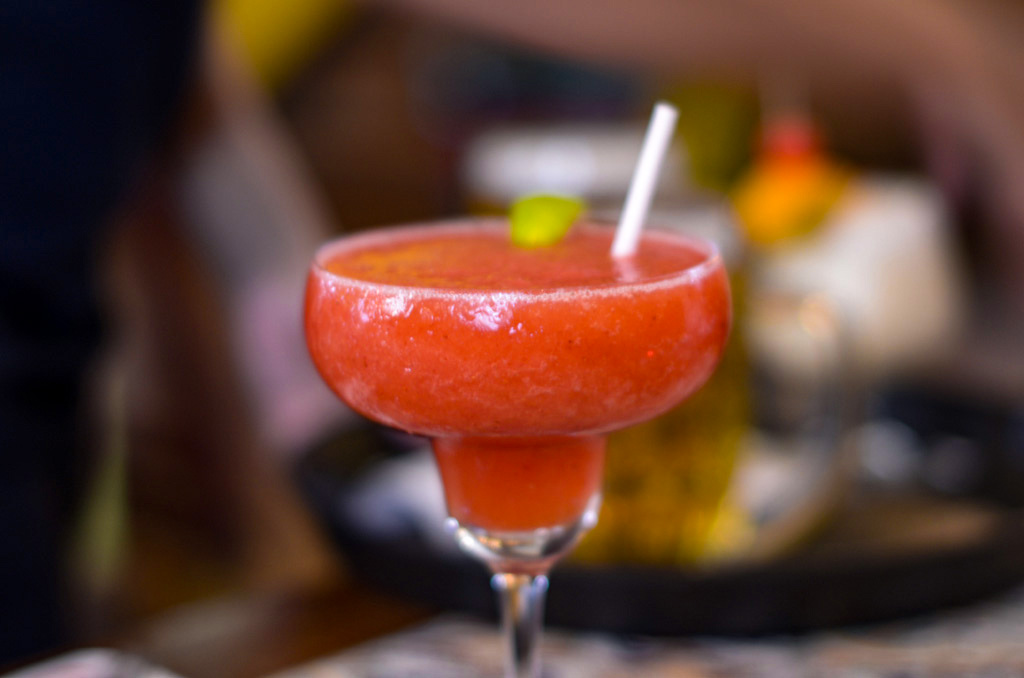
Who do we have to thank for this explosion of outrageous ignominies? One Mariano Martinez of Dallas, Texas.
Mariano had simple beginnings. He was born in 1944 in the Little Mexico neighborhood of Dallas.
Back in 1971, Mariano swung by his local 7-Eleven for a cup of coffee, saw the Slurpee® machine churning up its frozen concoctions, and thought, “hmm, wouldn’t it be great if there was alcohol in there?” And just like that, the frozen margarita was born.
Typically, the inspiration to add alcohol to anything would sound like a great idea to us. In this case, though, the collateral damage would be felt on a global scale.
Frosty Factory Fracaso
About 10 years later, the folks at the Frosty Factory of America in Louisiana upped the ante by deciding to Slurpeefy™ any drink they damn well pleased. Thus, the frozen daiquiri machine was born. This abomination, blended until smooth, quickly grew to ubiquity in the state. (You can still sample their output in drive-throughs.) From there, it expanded throughout the American southeast. Then the whole United States. Now, it’s found all over the world.
The reputation of the elegant classic has never recovered. Most people you talk to have never actually had a daiquiri. And I’d go so far as saying that partially because of this tragedy, most people have a skewed opinion of rum as a whole!
How much alcohol is in a daiquiri?
The best Spanish rums for a classic daiquiri usually run in the 35% to 45% alcohol by volume range. Consequently, you can expect your finished cocktail to be around 25% abv or 50-proof. Just the right amount to put a smile on your face!
The Classic Recipe
Today, I’m imploring you to reconsider the humble, near-perfect rum daiquiri. Doing so, in fact, could not be easier.
Just follow the easy instructions in the recipe below.
Then, help spread the word of the elegant flawlessness of this classic cocktail.
Together, we can undo its abysmal treatment across the ages and raise a glass to the miracles you can produce with a little rum… One sip at a time.
¡Salúd!
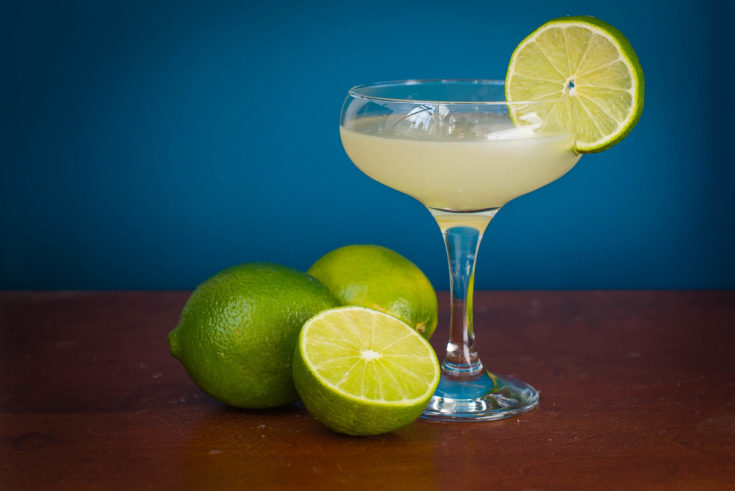
Daiquiri Recipe
Light, refreshing, a little tart, a little sweet, balanced, elegant, and perfect for a hot day in the islands. Anything else is not a daiquiri!
Ingredients
- 2 ounces Light Rum (REAL Havana Club 3 for authenticity)
- 1 ounce Fresh Lime Juice
- 1/4 ounce Simple Syrup
Instructions
- Simply pour all the ingredients into a cocktail shaker over ice and shake vigorously until completely cold! For this drink, the sweet/sour balance is key, so experiment to reach your version of perfection.
- Strain into a daiquiri glass if possible. (Even better if it’s pre-chilled.)
- Enjoy!

